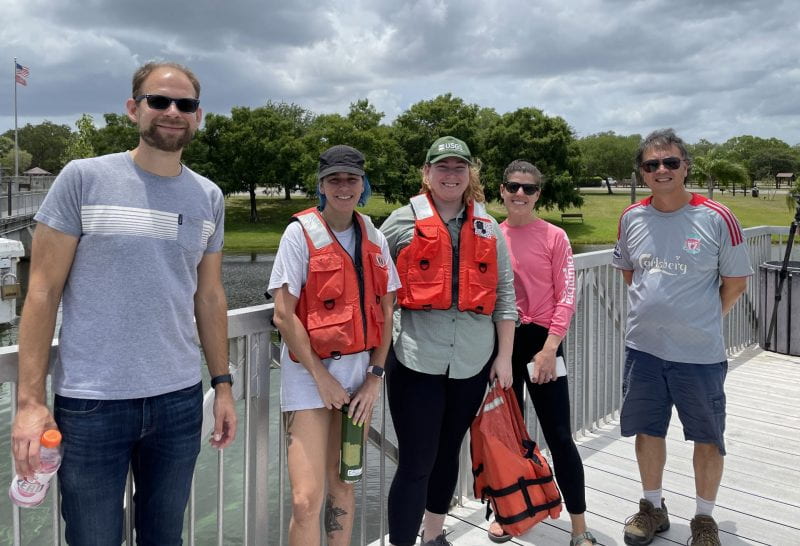Researchers Continue Algal Bloom Study on Lake Okeechobee


From left, Robert Smith, Viviana Mazzei, and Emily Karwack with the United States Geological Survey, and Lauren Krausfeldt and Jose Lopez with Nova Southeastern University.
Since 2019, Halmos College of Arts and Sciences (HCAS) faculty member Jose Lopez, Ph.D., has been co-leading an Army Corps of Engineers-funded project with the United States Geological Survey (USGS) to better understand the blue green (cyanobacterial) algae dynamics. These algae are at the heart of many of these harmful algal blooms (HABs) and microbial communities in the Lake Okeechobee watershed. After a couple of years of relative calm with no massive harmful algal blooms, the blue green algal communities have now made their presence known again in a big way.
Lopez, along with faculty and students from Florida Gulf Coast University, USGS, and the South Florida Water Management District, has continued the project using artificial mesocosms. These controlled outdoor experiments at the Franklin Lock test the effects of adding nitrate, ammonium, urea or phosphorus supplements to an environment. In addition to this work, the group conducts monthly environmental water sampling across Lake Okeechobee.
“The artificial mesocosm experiments are based on taking Caloosahatchee River water and placing it into large replicate cylinders, which essentially creates a closed system for systematic study,” Lopez said. This also allows the team to add various nutrient supplements to the natural river water communities and monitor the effects physiologically and allows the group to see which genes are activated without degrading the surrounding habitats.
Lopez’s laboratory at the Guy Harvey Oceanographic Center has been applying deep “-omics” techniques (metagenomics/metatranscriptomics approaches with deep DNA sequencing) to better understand the microbial community dynamics and drivers that could lead to HABs. HCAS assistant researcher Lauren Krausfeldt, Ph.D., has conducted most of the metagenomic analyses for the project. The large cache of genomic data will likely provide important baselines and references, adding richer context for future comparisons and possible HAB predictions.
This research is funded in part by the Army Corps of Engineers to the United States Geological Survey (USGS) and NSU via the Caribbean Cooperative Ecosystems Studies Unit.